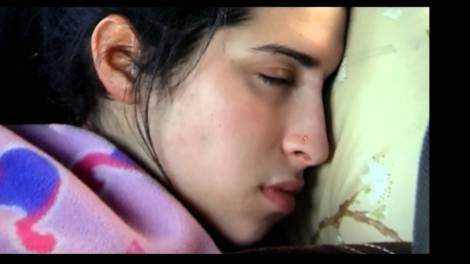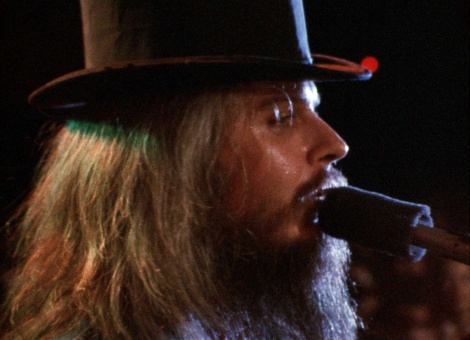
The cinematic music biography always finds itself in high demand. It is hard to think of a documentary subject that could be more commercially reliable (outside of its cousin, the concert film), especially when depicting artists of enduring popular attention. The past film season made this trend all the more evident, as a handful of music docs rose out of the festival scene to broader successes with general film and television audiences.
Brett Morgen’s Kurt Cobain: Montage of Heck was HBO’s monster entry, a collage of the late artist’s journals, music, and home videos that forms an enrapturing narrative around an ever-elusive personality. Liz Garbus’s What Happened, Miss Simone? was one of Netflix’s prestige pushes, an affiliation that no doubt harmed its traditional exhibition returns. It beautifully meshes jazz legend Nina Simone’s trail-blazing musical stylings with her political passion. And finally there was Asif Kapadia’s Amy, which took home an Oscar and broke nonfiction box office records in the United Kingdom with a depiction of singer Amy Winehouse’s meteoric rise and tragic downfall. When lined up next to each other, the ways in which the disparate formal techniques of these films shape their stories and arguments, potentially in ways outside the filmmakers’ control, become more apparent.


*****
One obvious but crucially dynamic angle is the time periods which manifest in the ephemera that the filmmakers deploy. Amy’s story is the most recent, and as a result, has the widest canvas of mass media from which to pluck and construct a narrative. It also happens to be the film most critical of the gossip industry’s role in its subject’s untimely demise, appropriating the kind of ghastly, vicious tabloid footage that gazes mockingly on an individual with blatant substance abuse issues.
By comparison, Montage of Heck finds itself on the fulcrum of a cultural paradigm shift, with MTV the main conduit for mainstream impressions of Cobain and Nirvana. This is compellingly contrasted with another modal transformation at the same time: the singer’s personal home movies, shot on the then-rapidly-popularizing digital video format. His journals make up the final crucial source of visual material, a smattering of doodles, lyrics, and existential musings that are instantly familiar in tone if one is at all aware of his music.
Nina Simone’s diary entries are far less frenzied, and composed of cogent, delicately handwritten testaments to her experiences. The benefit of the era in which she performed is that her depiction in the film is a lot less cluttered by a variety of audio-visual ingredients. It’s funny how we do not think of documentaries as “period pieces” in the same manner as fiction, even though its rendering of a period is one of the great strengths of What Happened, Miss Simone? Sure, there is the 16mm film, the old broadcast television performances, and the beautifully captured ’70s-era concert film footage; but the material that sells it are the formally composed black-and-white film photographs. It would be hard to aver that the format is in any way superior, but Amy and Montage of Heck will surely become more interesting as their subjects’ cultural impressions gain distance from the present.


*****
With primary sources in tow, the films take different approaches to accentuating or complimenting them. Miss Simone opens with a brilliant, raw sequence in which the title character returns to the stage for the first time in years in 1970s Europe. She slowly approaches her piano, pausing several times to assess the crowd with a degree of critical scrutiny not often found between a performer and her audience. The ambiguity of this instance is a killer hook for the film, and the later revelation that she was suffering from serious mental health problems never detracts from her eccentric decorum. This single sequence elucidates her brazen devotion to her craft, which translates seamlessly into her activism. It has a truly expressive effect that is so much more powerful than straight verbal explication.
Amy tends to err on the side of the such explication, but not necessarily to its detriment. The narrative is guided firmly by off-camera interviews while Winehouse’s home movies and tabloid depictions completely dominate the visual component of the picture. As a result, it prevents a more experientially satisfying viewing; but the central argument of the film – that Winehouse’s downfall was the result of a toxic personal and public environment – is preserved.
Montage of Heck goes for broke and defers almost entirely towards the intangible, attempting to put together the mind of an artist from what he left behind. Conventional interviews sparsely enter the frame with brief anecdotes or aphorisms on Cobain’s character, and then the viewer is underwater again. This is definitely more my cup of tea, the ride that suggests truth rather than the other way around.
Once the assemblage becomes lucid, so does the matter of perspective. Amy is the most rife with secondhand testimony. Outside of her music (often truncated to an all-too-brief sampling), we hear no personal ruminations on her own life. The film’s presentation seems to lack awareness that it practically commits the same act of myth-making as the parties it condemns. Its depiction of Winehouse is a generous but deceptive act of kindness that does a disservice to her personal truth by drawing solid lines around a cause and an effect. Montage of Heck makes less of an effort to organize the messiness of individual perception. Cobain’s depiction favors a poetic expression of consciousness rather than an essay. After watching the film, I was as enamored as I had ever been with the musician’s reclusive genius, and yet still so distant from truly understanding what he was “about.” I think there is value in such dissonance.

*****
Yet for all these films’ successes, the most unforgettable music doc of the last year was the first public release of a work from 1975 by the Grand Marshall of the nonfiction, Les Blank: his vérité coverage of a Leon Russell tour in A Poem Is a Naked Person. Two big parts of the 2015 restoration’s effectiveness are its devotion to context and a focus beyond the artist that, in the end, make him appear more defined. Russell’s concert performances and backstage interactions almost come off as ancillary to the display of ordinary denizens of Austin and Tulsa captured by Blank. Russell’s outline is codified by his audience and his region far more effectively than it would have been if the only characters we heard from in Poem were his family and his collaborators. So while it is not intended to be a biography in the traditional sense, I think it evokes the essence that the biography genre strives for better than the films that stick to type. All it takes is a measure of trust that, if you allow it to, reality can breathe.

*****
SXSW 2016 Epilogue: Somehow the year swung back around on me and the latest slate of music docs, a staple of SXSW’s offerings, hit the scene. I think I subconsciously avoided the standard biographical offerings out of the past year’s fatigue, but I did manage to catch doc legend Barbara Kopple’s latest vérité venture, Miss Sharon Jones!, which traces the titular artist’s struggle between battling cancer and wanting to perform. It’s a magnificent pairing of Kopple’s knack for direct style with a singularly charismatic central character. The best moment of the film is an unbroken sequence in which Jones, drained of energy from chemotherapy, unleashes an eye-popping, faith-driven performance in a pentecostal service. In moments like these, you become half-convinced Jones is not ailing from anything; but then the truth becomes clear as she returns to her pew at the front, so exhausted that she inhales like she’s breathing for three people. There’s a real sincerity to the picture, and it doesn’t waste time aggrandizing its subject. Jones is presented in her most vulnerable moments as much as her most triumphant ones. Keep an eye out for Miss Sharon Jones! as it tours the festival circuit.
-Ben Altenberg
*****
Editor’s Note: Official images provided by The Sundance Institute, SXSW Film, Netflix, and Home Box Office.


Pingback: Sundance 2017: “This is Everything: Gigi Gorgeous” is Nothing to Vlog Home About | CineMalin: Film Commentary and Criticism·